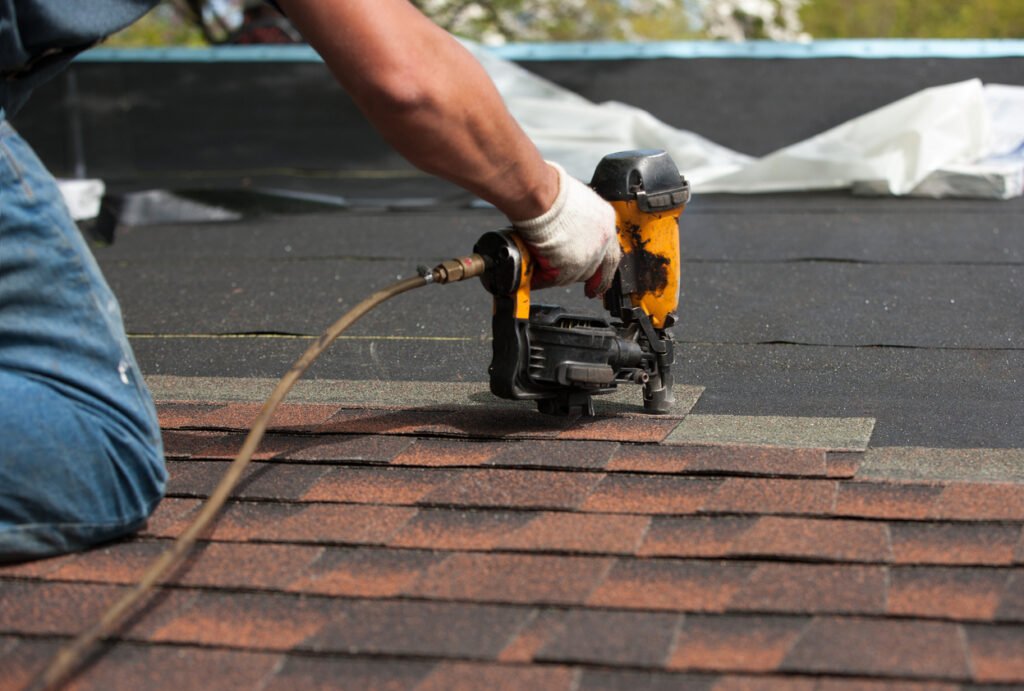<p>If your roof is leaking or showing visible signs of wear, it may be time to replace it. Roofing companies will assess your roof’s condition, recommend repairs, remove old material, and install a new roof. Unexpected weather conditions may delay these processes, but careful preparation can prevent significant setbacks. Here are some tips for working around the weather during a roof installation project:</p>



<h2 class="wp-block-heading"><strong>1. Plan Ahead</strong></h2>



<p>Schedule your<a href="https://csroofingsolutions.com"> <strong>roof installation</strong></a> or repairs at least a week in advance. This allows you and the roofers to monitor weather reports and reschedule in case of inclement weather. Take precautions like waiting for major storms to pass or freezing temperatures to rise before starting a project. This helps protect roofers from hazardous conditions that could lead to accidents or injuries. Scheduling your roof service during a period of moderate, clear weather is also beneficial for roofing materials like thermally activated sealants that require warmer weather or direct sunlight to adhere properly. A reputable roofing company will keep you informed of any project changes or delays caused by weather. They will also recommend days or times for your services that are less likely to be interrupted by poor weather.</p>



<h2 class="wp-block-heading"><strong>2. Install in Sections</strong></h2>



<p>Your roofing company may recommend installing your roof in sections if the weather in your area has been unpredictable. Renovating one section at a time prevents structural materials from being exposed to the elements for extended periods. As roofers move from one section to the next, they can remove old roofing, replace damaged decking, and apply new layers of waterproof membranes. Adding a water-resistant barrier to the exposed roof enables the surface to withstand various weather conditions until the final roofing materials are added. It also protects your new roof from water damage and mold that could reduce its lifespan.</p>



<h2 class="wp-block-heading"><strong>3. Use Tarps</strong></h2>



<p>If your roofers haven’t planned to work in sections and have removed all the old material when bad weather arrives, they can use tarps to prevent structural damage. Large tarps repel water from exposed sections of your attic and the roof’s decking. These temporary covers offer roofers a flexible solution to unexpected rain or other precipitation. When the weather clears again, roofing teams can easily remove the tarps, store them for future use, and resume the installation project. Depending on the severity of the storm, tarps may remain on the roof for several hours to several days. ;</p>



<h2 class="wp-block-heading"><strong>4. Ventilate Attic Spaces</strong></h2>



<p>Rainy or humid weather can cause warm, moist air to build up in your attic space. During a renovation, roofers can perform an inspection to confirm that your attic has proper ventilation. If necessary, they will install a ventilation system to keep your home dry and free from mildew during inclement weather. Maintaining a dry, leak-free attic protects roofing materials from damage that could weaken their structural integrity and lead to frequent repairs in the future. Reputable roofers will recommend ventilation systems with fans and vents that are appropriate for your attic’s size and your roof’s eaves.</p>



<h2 class="wp-block-heading"><strong>5. Communicate Clearly</strong></h2>



<p>Clear communication between roofers and clients enables both parties to set realistic expectations for the project during weather delays. Many roofing companies don’t perform work during hazardous weather conditions to protect their team members from harm. These companies should inform home and business owners of their inclement weather policies before beginning a new project to prevent future misunderstandings. They should also explain the steps they will take to minimize structural damage and extra costs during unexpected weather conditions. Clients can ask roofers direct questions to clarify their concerns and understand how the weather will affect the timeline and cost estimates for their roof.</p>



<h2 class="wp-block-heading"><strong>Prepare for Your Roof Installation</strong></h2>



<p>If your geographic region experiences hazardous weather during specific seasons, avoid scheduling roof repairs during these periods. Roof installation companies may recommend months or seasons that are ideal for new projects. Adhering to their recommendations reduces the chances of delays in your project and allows you to benefit from an upgraded roof sooner. Some roofers offer additional services, like gutter and insulation installation, that make your home more functional and energy efficient. Following your roofer’s instructions for preparing your home or business for a roof replacement helps these projects move more smoothly. Contact a roof installation company today to <strong><a href="https://www.valorli.com/nassau-county-ny-roofer/">learn more</a></strong> about their services and how they handle weather-related issues.</p>

How To Work Around Weather for Roof Installation

